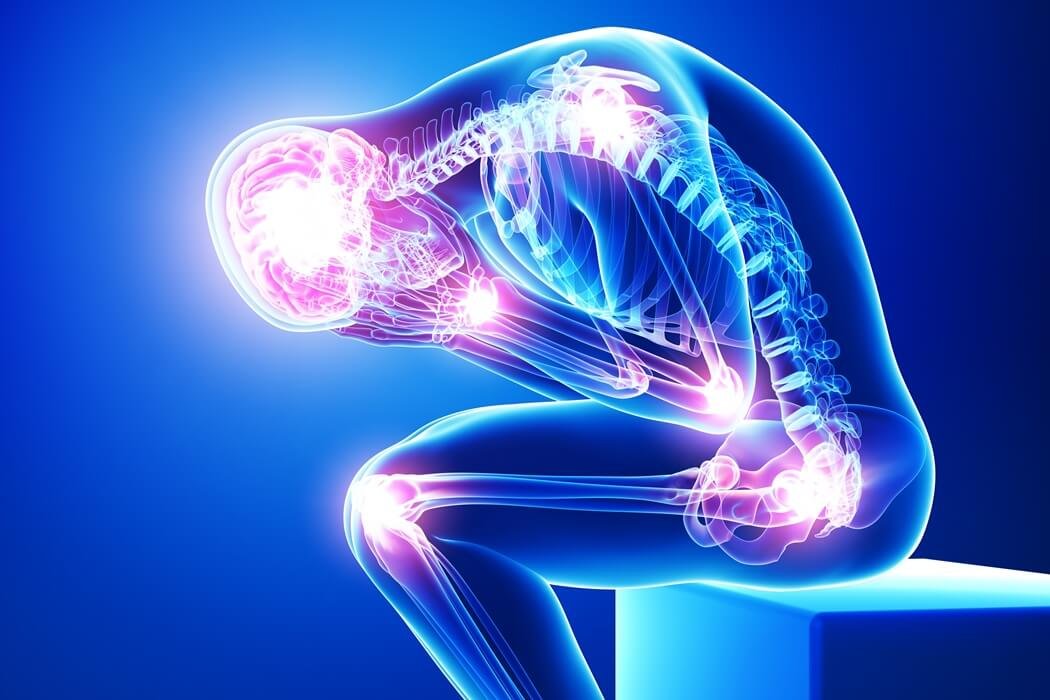Chronic pain can have a profound impact on one’s quality of life, affecting not just the physical body but also the emotional and mental well-being. Managing chronic pain often involves striking a delicate balance between medication and lifestyle changes. In this comprehensive guide, we delve into the multifaceted strategies for chronic pain management, exploring the causes and impact of chronic pain, various medication options, non-pharmacological approaches, lifestyle modifications, integrative therapies, personalized pain management plans, and the role of mind-body techniques in alleviating pain. By understanding the holistic approach to chronic pain management, individuals can empower themselves to find relief and improve their overall well-being.
1. Understanding Chronic Pain: Causes and Impact
Defining Chronic Pain
Chronic pain is like that one annoying guest at a party who just won’t leave – it sticks around for weeks, months, or even years. Unlike acute pain, which is a temporary discomfort after stubbing your toe, chronic pain is the party crasher that overstays its welcome.
Common Causes of Chronic Pain
Chronic pain can come from various sources like old injuries that never quite healed properly, conditions like arthritis or fibromyalgia, or even mysterious origins that leave doctors scratching their heads like they’re in a Sherlock Holmes novel.
The Physical and Emotional Impact of Chronic Pain
Imagine feeling like you have a personal rain cloud following you around all day – that’s what chronic pain can do to a person. It’s not just physical agony; it can mess with your mood, sleep, relationships, and overall quality of life.
Tydol 100 tablet is a medicine used to treat moderate to severe acute pain in adults. It is used to treat many conditions such as headache, fever, period pain, toothache, and colds. It effectively alleviates pain when other treatments fail to relieve your pain.
2. Medication Options for Chronic Pain Management
Overview of Pain Medications
When it comes to managing pain, medications can be a lifesaver. From over-the-counter options like ibuprofen to prescription heavy hitters like opioids, there’s a whole arsenal of drugs ready to tackle that persistent pain.
Types of Medications for Different Types of Pain
Just like how Batman has different gadgets for different villains, pain medications also come in various forms to combat specific types of pain. Whether it’s nerve pain, inflammation, or good old-fashioned muscle aches, there’s a pill for that.
Potential Side Effects and Risks of Pain Medications
Now, every superhero has a weakness (sorry, Superman). Pain medications are no exception – they can come with side effects like drowsiness, nausea, or worse, dependency and addiction. It’s like dancing with the devil in the pale moonlight.
3. Exploring Non-Pharmacological Approaches to Pain Relief
Physical Therapy and Exercise
Picture this: your body is a rusty old machine, and physical therapy is the mechanic that helps oil those creaky joints and tight muscles. Exercise isn’t just for gym rats; it can be a powerful tool in managing chronic pain.
Acupuncture and Acupressure
Have you ever seen those photos of people with needles sticking out of their skin and thought, “Nope, not for me”? Well, acupuncture might seem like voodoo magic, but for many, it’s a needle-in-a-haystack solution for pain relief.
Cognitive-Behavioral Therapy for Pain Management
It’s like therapy but with a twist – instead of just talking about your childhood traumas, cognitive-behavioral therapy helps you rewire your brain to cope better with pain. It’s basically teaching your mind new dance moves to outsmart chronic pain.
4. Lifestyle Changes to Support Chronic Pain Management
Importance of Diet and Nutrition
Just like how a sports car needs high-octane fuel to perform its best, your body needs proper nutrition to function well. Eating a balanced diet can help reduce inflammation, boost your energy levels, and overall, make you feel less like a zombie with a sore back.
Sleep Hygiene and Its Impact on Pain
Ah, sleep – that elusive temptress that seems to slip away when you need it the most. Poor sleep not only makes you cranky and sluggish but can also dial up your perception of pain. Practicing good sleep hygiene is like tucking yourself in with a cozy bedtime story for pain relief.
Stress Management Techniques for Pain Relief
Stress is like the evil villain plotting against your superhero efforts to beat chronic pain. Whether it’s mindfulness meditation, yoga, or simply taking time to unwind with a good book, finding ways to manage stress can be a game-changer in your battle against pain.
So there you have it, folks – a mix of medication, non-pharmacological interventions, and lifestyle changes can help you tip the scales in your favor when facing off against chronic pain. Remember, managing chronic pain is like a marathon, not a sprint – so pace yourself, stay determined, and don’t forget to sprinkle a little humor along the way.
5. Integrative Approaches for Holistic Pain Management
Combining Medication with Alternative Therapies
When it comes to managing chronic pain, sometimes the best approach is a tag team effort. Pairing traditional medications with alternative therapies like acupuncture, chiropractic care, or even massage can provide a well-rounded attack on pain.
Mindfulness and Meditation Practices
In a world full of noise and chaos, finding moments of stillness can work wonders for managing chronic pain. Mindfulness and meditation practices help shift focus away from pain signals, promoting relaxation and stress reduction.
Herbal Remedies and Supplements for Pain Relief
Mother Nature has a few tricks up her sleeve when it comes to pain relief. From turmeric for its anti-inflammatory properties to peppermint oil for soothing muscle aches, exploring herbal remedies and supplements can offer natural alternatives to traditional medications.
6. Building a Personalized Chronic Pain Management Plan
Consulting with Healthcare Providers
Navigating the world of chronic pain management can be overwhelming, but you don’t have to do it alone. Consulting with healthcare providers, including pain specialists, physical therapists, and mental health professionals, can help tailor a personalized plan that suits your specific needs.
Setting Realistic Goals and Expectations
While we all dream of being pain-free, setting realistic goals and expectations is key to long-term success in managing chronic pain. It’s about finding a balance between managing pain effectively and living a fulfilling life.
Monitoring and Adjusting the Pain Management Plan
Flexibility is key when it comes to chronic pain management. Monitoring your progress, tracking pain levels, and being open to adjusting your pain management plan as needed can help you stay on top of your pain game.
7. The Role of Mind-Body Techniques in Pain Relief
Visualization and Guided Imagery for Pain Management
The power of the mind is a force to be reckoned with, especially when it comes to managing pain. Visualization and guided imagery techniques can help reframe pain perception, allowing for a more positive and empowering experience.
Breathing Techniques and Relaxation Exercises
Sometimes taking a deep breath is more than just a figure of speech – it’s a pain management strategy. Incorporating breathing techniques and relaxation exercises can help calm the nervous system, reduce muscle tension, and promote overall well-being.
Yoga and Tai Chi for Pain Relief
Movement is medicine, and practices like yoga and Tai Chi offer a double dose of benefits – physical activity and stress reduction. These gentle yet effective exercises can improve flexibility, strengthen muscles, and enhance mindfulness, all of which contribute to better pain management.As individuals navigate their chronic pain management journey, it is crucial to embrace a personalized and holistic approach that combines medication, lifestyle adjustments, and integrative therapies. By recognizing the interconnected nature of physical, emotional, and mental well-being, individuals can create a comprehensive pain management plan that addresses their unique needs. With dedication, support from healthcare providers, and a commitment to self-care, those living with chronic pain can strive towards a more balanced and fulfilling life.















Leave a Reply